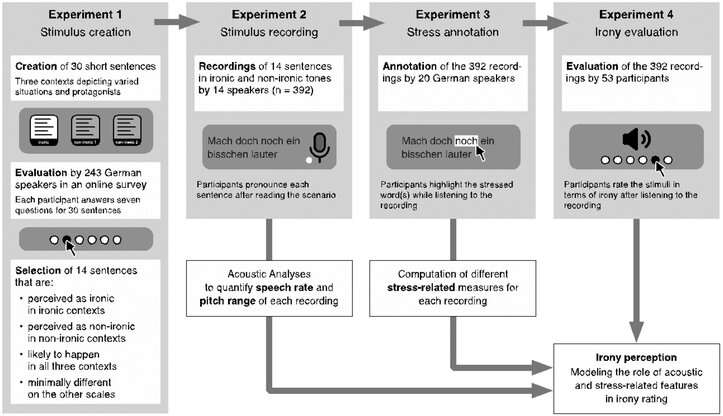This article has been reviewed according to Science X's editorial process and policies. Editors have highlighted the following attributes while ensuring the content's credibility:
fact-checked
peer-reviewed publication
trusted source
proofread
Oh, that's nice: How we recognize irony

We don't always recognize irony right away. An interdisciplinary research team at the Max Planck Institute for Empirical Aesthetics in Frankfurt am Main found that irony is primarily signaled by moving stress within a sentence. The team's findings have just been published as an open access article in the Journal of Experimental Psychology: General.
The research is part of a larger framework that aims to understand sound–meaning associations: Appreciating music, paying attention to a traffic jam, or inferring a speaker's state of mind may seem to be "easy" cognitive processes, but the core principles that govern all of these—that is, making sense of sounds—is altogether poorly understood.
This is where the interdisciplinary research team consisting of experts from the humanities, social, and cognitive sciences came in: In their study, the researchers focused on stress within a sentence structure, the so-called prosodic stress. It is well established that prosodic stress is relevant to verbal communication. However, it is unclear how exactly it contributes to understanding a speakers' intentions.
"In this research, we focused on irony, which illustrates perfectly that—and how—acoustic properties can have a decisive role in the comprehension of identically worded sentences," explains first author Pauline Larrouy-Maestri.
The researchers selected 14 short German sentences that can be interpreted both ironically and non-ironically, depending on the context, such as "Why don't you turn the volume up some more?" or "The dog listens really well." The team then recorded the 14 sentences spoken in both a literal and an ironic condition by 14 speakers. In the resulting 392 recordings, 20 listeners marked the acoustically prominent words, thus identifying perceived prosodic stresses. In addition, 53 other participants rated how ironic they perceived the 392 recorded sentences to be.
The combined analysis of irony ratings, acoustic features, and various prosodic stress characteristics revealed that ironic meaning is primarily signaled by a stress shift from the end of a sentence to an earlier position.
Larrouy-Maestri says, "By placing stress on words at the beginning of a sentence, the speaker provides clues that the literal meaning is not necessarily the intended meaning. This change in position might function as a 'warning' cue for listeners to consider potential alternative meanings of the sentence."
Thus, prosodic stress plays a crucial role in the perception of irony. These findings support the view that the dynamic aspect of prosody conveys important cues in communication and thus contributes to further understanding of sound–meaning associations in humans.
More information: Pauline Larrouy-Maestri et al, Ironic twists of sentence meaning can be signaled by forward move of prosodic stress., Journal of Experimental Psychology: General (2023). DOI: 10.1037/xge0001377





















